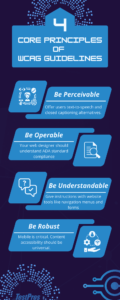In today’s competitive market, the success of a product or website heavily relies on the user experience it provides. That’s where usability testing comes into play. Usability testing is a crucial method used to evaluate the user experience and ensure that a product or website is intuitive and easy to use. By involving a representative group of users throughout the development process, usability testing helps identify and fix any issues, saving time and money in the long run. The feedback obtained from usability testing provides unbiased insights, stress tests the product, and illuminates both its strengths and weaknesses. Furthermore, usability testing inspires future improvements and enhancements, making it an indispensable tool in product and website development.

Understanding Usability Testing
Definition of usability testing
Usability testing is a method used to evaluate the user experience of a product or website. It involves testing the product with a representative group of users to determine if it is easy to use and intuitive. The main focus of usability testing is to assess how well users are able to complete tasks and navigate through the product or website. By observing users in real-time and collecting feedback, designers and developers can gain valuable insights into the strengths and weaknesses of their design.
Purpose of usability testing
The purpose of usability testing is to ensure that a product or website meets the needs and expectations of its users. By conducting usability tests, designers and developers can identify any issues or obstacles that may prevent users from achieving their goals. This includes anything from confusing navigation menus to unintuitive interface layouts. By addressing these issues early on in the development process, usability testing helps to create a product that is user-friendly and enjoyable to use.
Importance of usability testing in product and website development
Usability testing is crucial in product and website development because it helps to ensure that the final product meets the needs and expectations of its target audience. By involving representative users in the testing process, designers and developers can gain valuable insights into how their product or website performs in real-life scenarios. This feedback allows them to make informed design decisions and create a product that is user-centered and intuitive. Without usability testing, designers and developers risk creating a product that may not meet the needs or expectations of their users.
The Usability Testing Process
Stages of usability testing
Usability testing typically involves several stages that occur throughout the development process. The first stage is the planning phase, where the objectives and goals of the usability test are defined. This includes identifying the target audience, determining the tasks that will be tested, and selecting participants for the study.
The second stage is the preparation phase, where the test materials and protocols are developed. This includes creating scenarios or tasks for participants to complete, designing questionnaires or surveys to gather feedback, and setting up the testing environment.
The third stage is the actual testing phase, where participants are asked to complete the tasks while the team observes and takes notes. This is usually done in a controlled environment, such as a usability lab, to ensure consistent conditions for all participants.
The final stage is the analysis phase, where the data collected during the usability test is analyzed and interpreted. This involves identifying patterns or trends in the feedback and prioritizing any issues that were identified. This information is then used to make informed design decisions and improve the overall user experience of the product or website.
Involvement of representative group of users
One of the key principles of usability testing is involving a representative group of users. This means selecting participants who match the characteristics and demographics of the target audience. By involving representative users, designers and developers can gain insights into how their product or website performs for different types of users. This includes users with varying levels of technical expertise, different cultural backgrounds, and different abilities. By involving a diverse group of users, usability testing helps to ensure that a product or website is usable and accessible to everyone.
Task-oriented approach
Usability testing takes a task-oriented approach, meaning that participants are asked to complete specific tasks while using the product or website. This allows researchers to observe how users interact with the design and identify any issues or obstacles that may arise. By focusing on tasks, usability testing provides a realistic and practical assessment of the user experience. This approach helps designers and developers to understand how users navigate through the product or website and whether they are able to achieve their goals efficiently.
Observation and note-taking during usability study
During a usability study, the team observes participants as they interact with the product or website. This observation allows researchers to gain insights into how users approach the tasks, what strategies they employ, and any difficulties they encounter. By observing participants in real-time, the team can capture valuable information that may not be apparent from quantitative data alone. Additionally, note-taking is an essential part of usability testing, as it allows the team to record observations, insights, and feedback from participants. These notes serve as a valuable reference for analysis and help to ensure that no important details are overlooked.

Benefits of Usability Testing
Identification and resolution of user experience issues
One of the main benefits of usability testing is that it helps identify and resolve user experience issues. By observing users in real-time and collecting their feedback, designers and developers can gain insights into any problems or obstacles that users may encounter. This includes identifying confusing navigation menus, unclear instructions, or performance issues. By addressing these issues early in the development process, usability testing helps to create a product that is intuitive, easy to use, and enjoyable for users.
Unbiased and direct feedback from users
Usability testing provides unbiased and direct feedback from users. By involving representative users, designers and developers can gather insights and opinions that are not influenced by personal bias or assumptions. This feedback helps to highlight any areas where the design may be falling short and allows for improvements to be made. By listening to the thoughts and experiences of real users, designers and developers can gain valuable insights and make informed decisions to enhance the overall user experience.
Convenience of portable recording equipment or note-taking
Usability testing can be conveniently conducted using portable recording equipment or note-taking. These tools allow researchers to capture the participant’s interactions and feedback during the testing session. Portable recording equipment, such as video cameras or screen recording software, can provide a visual record of the usability test, allowing the team to review the session in detail. Note-taking is also a common practice during usability testing, as it allows the team to record important observations and insights. These tools provide convenience and flexibility in capturing data, ensuring that no valuable information is lost.
Time and cost savings in the development process
Usability testing can save time and money in the development process. By identifying and resolving user experience issues early on, usability testing helps to prevent costly reworks or redesigns later in the development process. This can help to reduce development timelines and budgets. Additionally, usability testing allows designers and developers to make informed decisions based on user feedback, reducing the need for excessive iterations or guesswork. By focusing on user needs and preferences, usability testing ultimately leads to a more efficient and cost-effective development process.
Uncovering Points of Friction
Identifying areas causing difficulty or frustration for users
Usability testing is effective in uncovering points of friction by identifying areas that cause difficulty or frustration for users. By observing participants as they navigate through the product or website, researchers can identify specific interactions, features, or design elements that are hindering the user experience. This may include confusing navigation menus, unclear instructions, or unintuitive interface layouts. By addressing these areas of friction, designers and developers can enhance the user experience and improve user satisfaction.
Improving user satisfaction and engagement
Usability testing plays a crucial role in improving user satisfaction and engagement. By identifying and addressing the points of friction, designers and developers can create a product or website that is more intuitive and user-friendly. This, in turn, leads to increased user satisfaction and engagement. When users are able to easily accomplish their tasks and navigate through the design without frustration, they are more likely to have a positive experience and develop a sense of trust with the product or website. Improved user satisfaction and engagement ultimately leads to increased user loyalty and success.
Enhancing overall user experience
Usability testing helps enhance the overall user experience by prioritizing user needs and preferences. By uncovering points of friction and addressing them, designers and developers can create a more seamless and enjoyable user experience. This includes improving the ease of use, efficiency, and effectiveness of the design. By focusing on the user experience, designers and developers can create designs that are intuitive, visually appealing, and accessible. The enhanced user experience not only benefits users directly but also contributes to the success of the product or website.
Stress Testing and Environmental Factors
Testing product usability in different environments
Usability testing can include stress testing, which involves testing the product usability in different environments. This is especially important for products or websites that are expected to be used in a variety of settings, such as mobile applications or web-based tools. By conducting usability tests in different environments, designers and developers can assess how well the design performs under varying conditions. This may include testing the product on different devices, different operating systems, or different internet connection speeds. By identifying any performance issues or limitations, designers and developers can make necessary adjustments to ensure the product’s reliability and resilience.
Revealing performance issues under varying conditions
Stress testing in usability testing helps to reveal performance issues that may arise under varying conditions. By testing the product in different environments, designers and developers can identify any performance bottlenecks, latency issues, or functional limitations that may occur. This includes assessing how well the design performs under heavy user loads, low internet connectivity, or other challenging conditions. By uncovering these performance issues, usability testing allows designers and developers to make improvements and ensure that the design functions optimally in any given situation.
Ensuring product reliability and resilience
Usability testing, especially stress testing, is crucial in ensuring that a product or website is reliable and resilient. By testing the product in various environments and under different conditions, designers and developers can identify any vulnerabilities or weaknesses that may compromise the product’s reliability. This includes identifying any potential security risks, system failures, or data loss scenarios. By addressing these issues early on, designers and developers can take the necessary measures to enhance the product’s reliability and resilience, preventing any negative impact on users or their data.
Diverse User Perspectives
Gaining insights from users with different backgrounds and abilities
Usability testing is valuable for gaining insights from users with different backgrounds and abilities. By involving a diverse group of users in the testing process, designers and developers can gain a better understanding of how their design performs for different user segments. This includes users with varying levels of technical expertise, different cultural backgrounds, and different abilities. By considering the perspectives and experiences of diverse users, designers and developers can create a more inclusive and accessible design. This helps to ensure that the product or website meets the needs and expectations of a wide range of users.
Identifying potential issues for specific user groups
Usability testing helps to identify potential issues for specific user groups. By involving representative users, designers and developers can gain insights into how the design performs for different user segments. This includes identifying any barriers or obstacles that may hinder specific user groups from accomplishing their tasks or achieving their goals. For example, usability testing may reveal that the design is not accessible for users with visual impairments or that it does not support different languages. By identifying these potential issues, designers and developers can make necessary adjustments to optimize usability and ensure an inclusive user experience.
Optimizing usability for a wide range of users
Usability testing is instrumental in optimizing usability for a wide range of users. By gaining insights from diverse user perspectives, designers and developers can make informed decisions on how to tailor the design to different user needs and preferences. This includes optimizing the interface layout, navigation menus, and content presentation. By considering the diverse perspectives of users, designers and developers can create a design that is easy to use and enjoyable for a wide range of users. This optimization ensures that the product or website is accessible and satisfies the needs and expectations of all users.
Identifying Strengths and Weaknesses
Recognizing aspects of the product that excel in usability
Usability testing helps designers and developers recognize aspects of the product that excel in usability. By observing participants as they interact with the design, researchers can identify any aspects that are particularly well-designed or intuitive. This could be a feature that users find easy to navigate or a workflow that is exceptionally efficient. By recognizing these strengths, designers and developers can build upon them and incorporate them into other parts of the design. This recognition of strengths helps to elevate the overall user experience and create a design that consistently performs well.
Addressing weaknesses to enhance user experience
Usability testing also helps identify weaknesses in the product or website design. By observing participants and collecting their feedback, designers and developers can identify any areas where the design falls short or causes difficulties for users. This could include confusing navigation menus, unclear instructions, or performance issues. By addressing these weaknesses, designers and developers can make design modifications to enhance the user experience. This might involve simplifying navigation, improving clarity in instructions, or enhancing performance. By proactively addressing weaknesses, designers and developers can create a design that is more intuitive, user-friendly, and satisfying for users.
Optimizing product performance and usability
Through usability testing, designers and developers can optimize the performance and usability of the product or website. By gaining insights into the strengths and weaknesses of the design, they can make informed decisions on how to enhance the overall design. This can include optimizing performance by identifying and resolving any issues that may hinder the user experience. It can also involve refining the user interface, navigation, and interaction design to improve usability. By continually optimizing the product’s performance and usability based on insights from usability testing, designers and developers can ensure that the design evolves and stays relevant to user needs and preferences.
Inspiring Future Improvements
Feedback as a catalyst for innovation and enhancements
Feedback from usability testing serves as a catalyst for innovation and enhancements. By listening to the feedback and insights of users, designers and developers gain valuable information that can drive improvements to the product or website. This feedback can highlight areas where the design may be falling short or where there is room for innovation. By leveraging this feedback, designers and developers can continuously evolve the design and stay ahead of user expectations. This iterative process of feedback and improvement is crucial for creating a product or website that remains competitive and relevant in a rapidly evolving market.
Identifying opportunities for product evolution
Usability testing helps identify opportunities for product evolution. By observing participants as they interact with the design and collecting their feedback, designers and developers can uncover areas where there is potential for growth or expansion. This could be in the form of new features, improved functionalities, or enhanced user experiences. By identifying these opportunities, designers and developers can explore ways to innovate and evolve the product in line with user needs and preferences. This forward-thinking approach ensures that the product remains relevant and continues to meet the changing demands of users.
Driving continuous improvement in user experience
Usability testing plays a key role in driving continuous improvement in the user experience. By consistently gathering feedback and insights from users, designers and developers can identify any areas where the design can be enhanced. This could involve refining the interface, streamlining workflows, or optimizing performance. By leveraging the data and insights from usability testing, designers and developers can make informed decisions on how to improve the user experience. This continuous improvement focus ensures that the design remains user-centered and that users’ evolving needs and expectations are met.
In conclusion, usability testing is a crucial method in evaluating the user experience of a product or website. By involving representative users, conducting task-oriented studies, and observing participants in real-time, designers and developers can gain valuable insights into the strengths and weaknesses of their designs. Usability testing helps to identify and resolve user experience issues, provides unbiased feedback, and saves time and money in the development process. It uncovers points of friction, tests product usability in different environments, considers diverse user perspectives, and identifies strengths and weaknesses. Feedback from usability testing inspires future improvements and drives continuous enhancement in the user experience. Ultimately, usability testing ensures that the final product or website meets the needs and expectations of its users, creating a design that is intuitive, accessible, and enjoyable to use.



